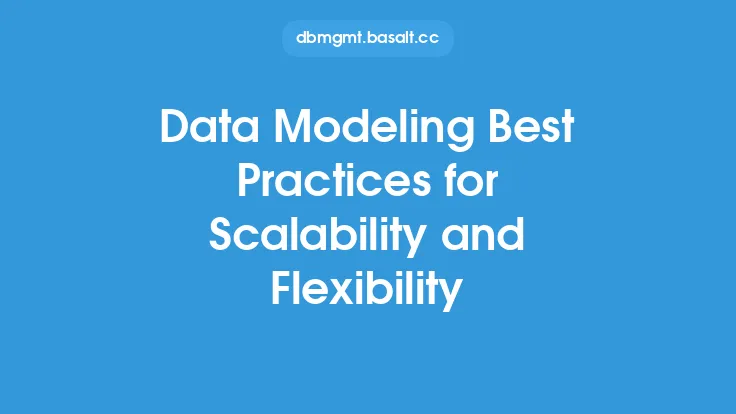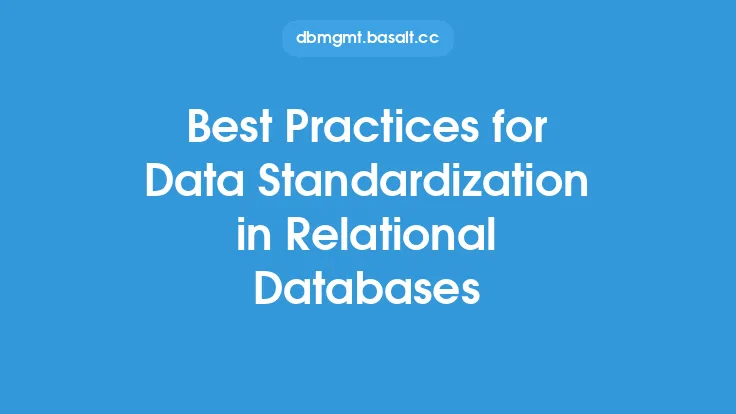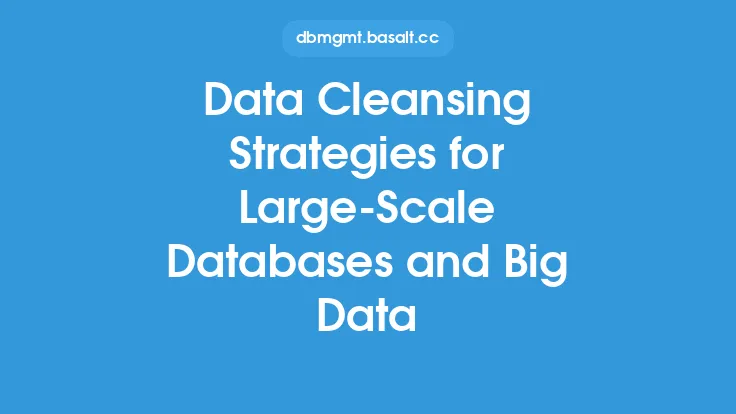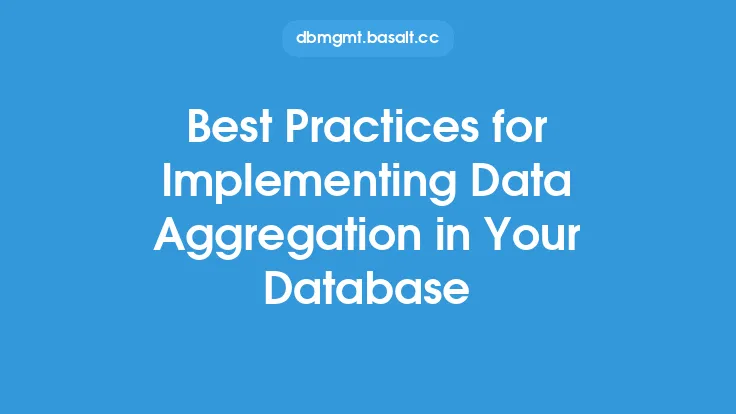Data cleansing and data normalization are crucial steps in the data management process, ensuring that data is accurate, consistent, and reliable. Data cleansing involves identifying and correcting errors, inconsistencies, and inaccuracies in data, while data normalization involves transforming data into a standardized format to prevent data redundancy and improve data integrity. In this article, we will discuss the best practices for data cleansing and data normalization, providing a comprehensive guide for data professionals.
Introduction to Data Cleansing
Data cleansing is a critical step in the data management process, as it ensures that data is accurate, complete, and consistent. Data cleansing involves identifying and correcting errors, inconsistencies, and inaccuracies in data, which can be caused by various factors such as human error, data entry mistakes, or system glitches. The goal of data cleansing is to improve the quality of data, making it more reliable and trustworthy for analysis and decision-making.
Data Normalization Techniques
Data normalization is the process of transforming data into a standardized format to prevent data redundancy and improve data integrity. There are several data normalization techniques, including first normal form (1NF), second normal form (2NF), and third normal form (3NF). Each normal form has its own set of rules and guidelines for transforming data into a standardized format. For example, 1NF requires that each cell in a table contains a single value, while 2NF requires that each non-key attribute in a table depends on the entire primary key.
Best Practices for Data Cleansing
To ensure effective data cleansing, several best practices should be followed. First, data should be validated against a set of predefined rules and constraints to identify errors and inconsistencies. Second, data should be standardized to ensure consistency in formatting and coding. Third, data should be verified against external sources to ensure accuracy and completeness. Finally, data should be documented and tracked to ensure that changes are recorded and auditable.
Data Quality Metrics
Data quality metrics are used to measure the accuracy, completeness, and consistency of data. Common data quality metrics include data accuracy, data completeness, data consistency, and data timeliness. Data accuracy refers to the degree to which data is free from errors, while data completeness refers to the degree to which data is comprehensive and inclusive. Data consistency refers to the degree to which data is standardized and formatted consistently, while data timeliness refers to the degree to which data is up-to-date and current.
Data Profiling
Data profiling is the process of analyzing data to identify patterns, trends, and relationships. Data profiling involves using statistical and analytical techniques to examine data and identify areas for improvement. Data profiling can help identify data quality issues, such as missing or duplicate data, and provide insights into data distribution and frequency. Data profiling can also help identify relationships between data elements and identify areas for data normalization.
Data Standardization
Data standardization is the process of transforming data into a standardized format to ensure consistency and comparability. Data standardization involves using standardized codes, formats, and structures to represent data. For example, using standardized codes for gender, age, and occupation can help ensure consistency and comparability across different datasets. Data standardization can also help improve data quality by reducing errors and inconsistencies.
Data Validation
Data validation is the process of checking data against a set of predefined rules and constraints to ensure accuracy and consistency. Data validation involves using techniques such as data type checking, range checking, and format checking to identify errors and inconsistencies. Data validation can be performed using automated tools and techniques, such as data validation software, or manually, using data validation rules and guidelines.
Data Cleansing Tools and Techniques
Several data cleansing tools and techniques are available, including data cleansing software, data profiling tools, and data validation tools. Data cleansing software can help automate the data cleansing process, while data profiling tools can help identify patterns and trends in data. Data validation tools can help check data against predefined rules and constraints to ensure accuracy and consistency. Other data cleansing techniques include data matching, data merging, and data purging.
Conclusion
In conclusion, data cleansing and data normalization are critical steps in the data management process, ensuring that data is accurate, consistent, and reliable. By following best practices for data cleansing and data normalization, data professionals can improve the quality of data, making it more reliable and trustworthy for analysis and decision-making. By using data quality metrics, data profiling, data standardization, and data validation, data professionals can ensure that data is accurate, complete, and consistent, and that it meets the needs of the organization.





